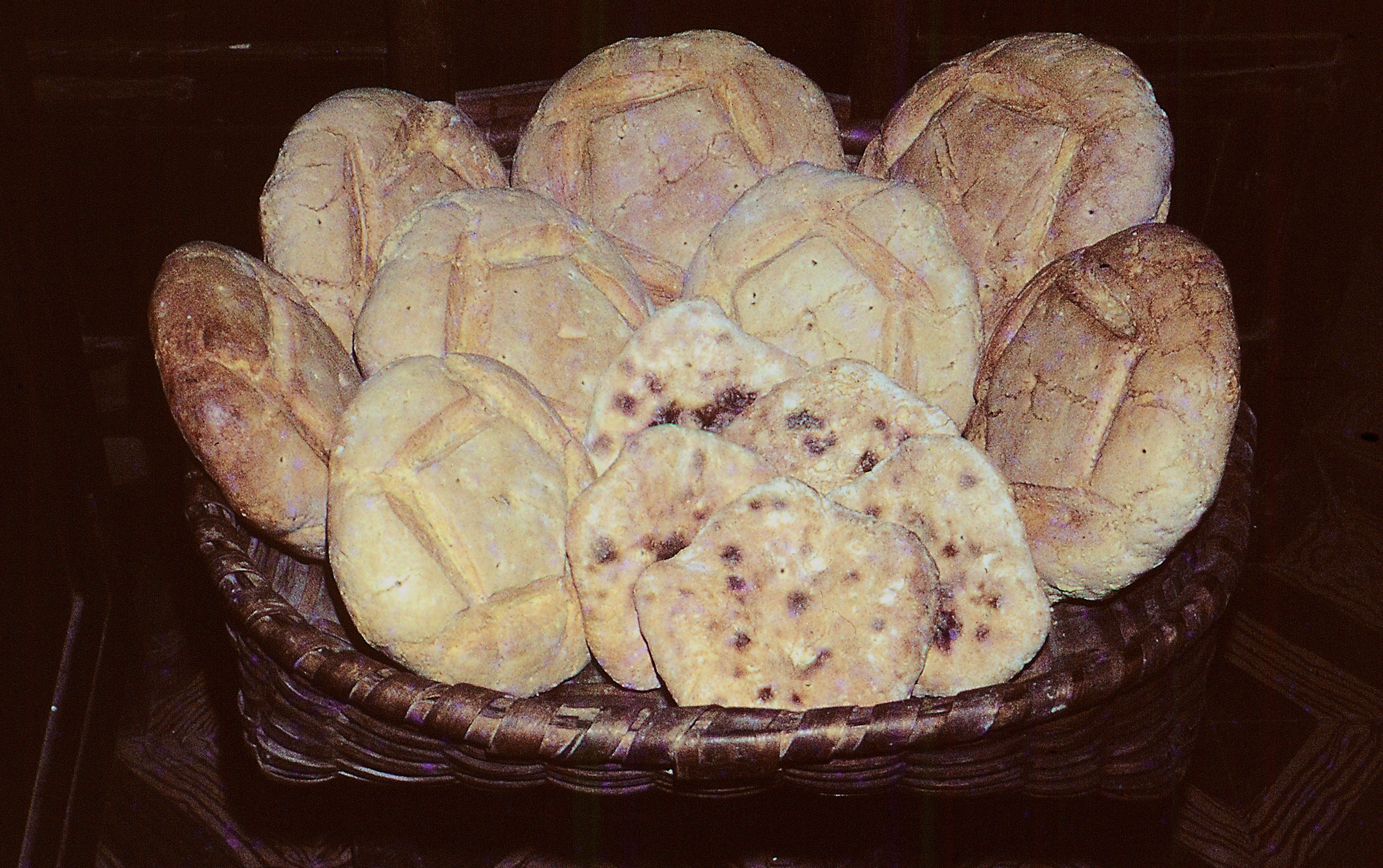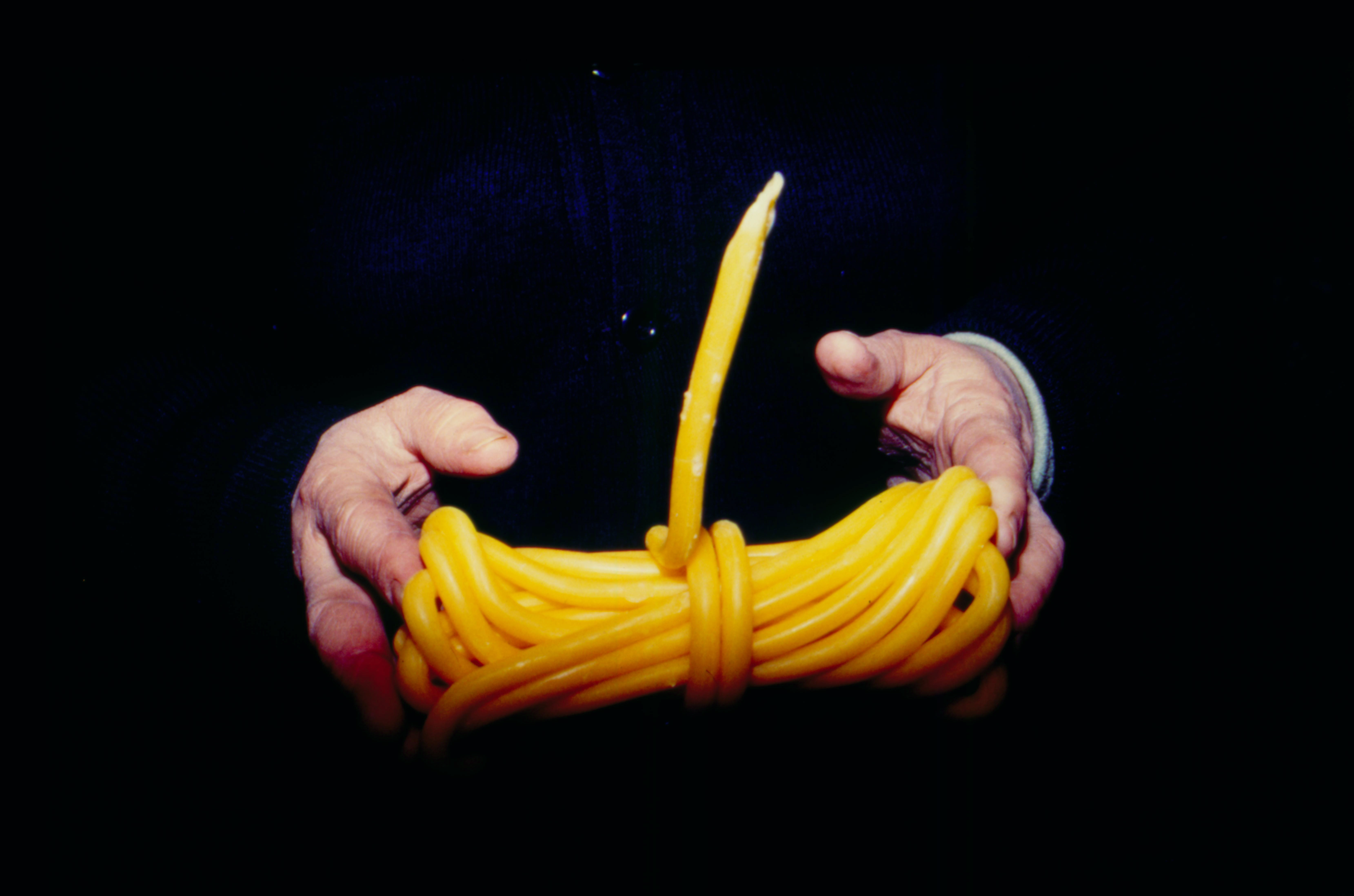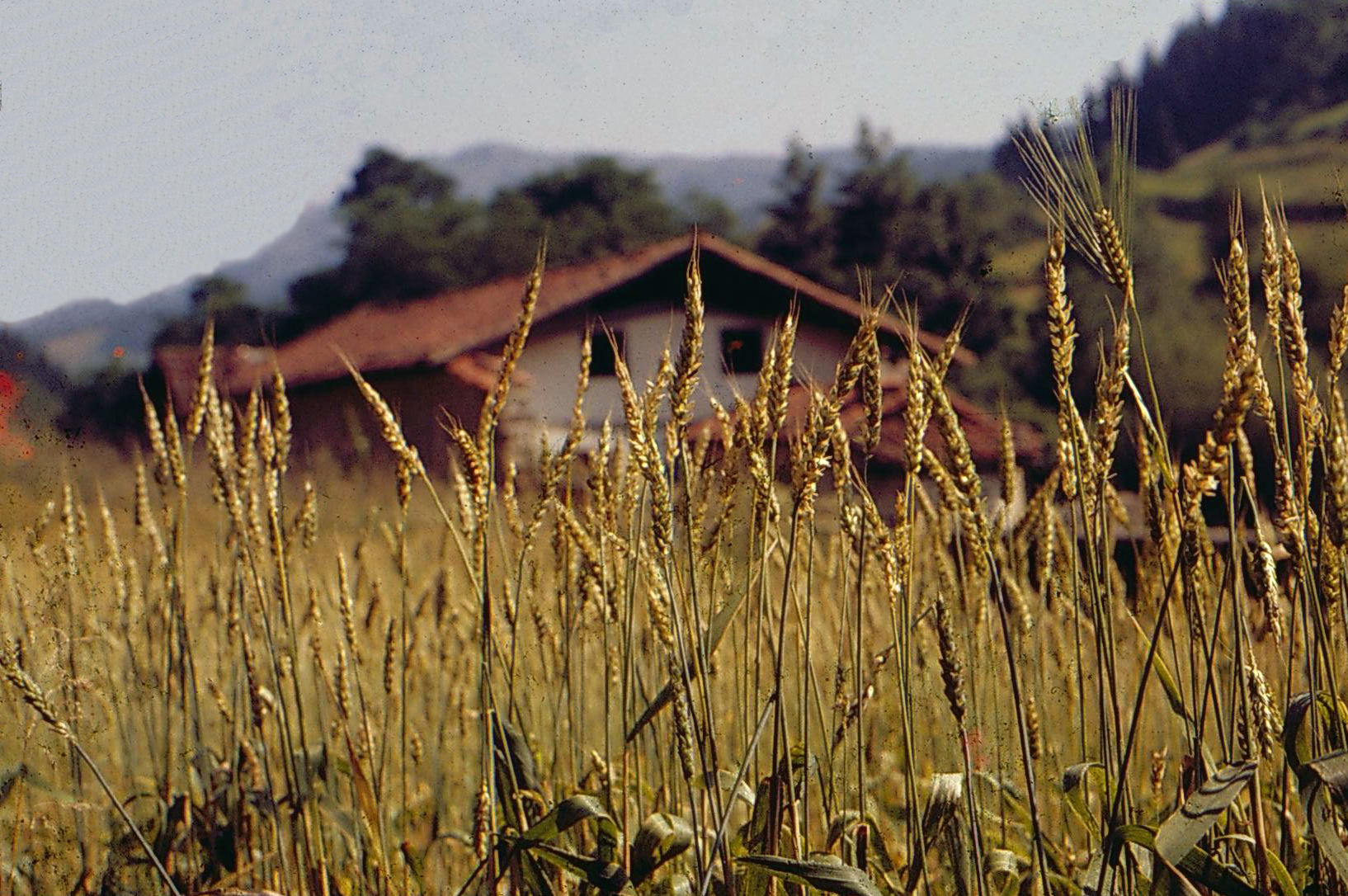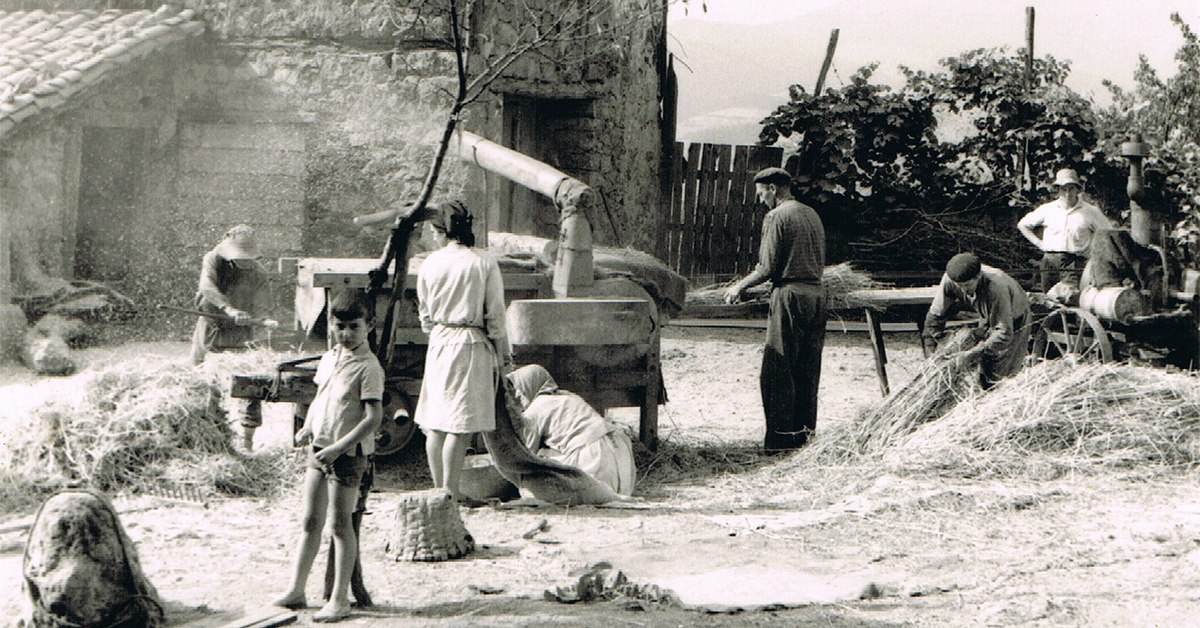Archives
Wheat was once a crop of great relevance in the territory of Bizkaia, wheat bread being an essential component in the diet of common folks. Abandonment of wheat took place from the 1950s onwards, because of the hard work and efforts which its cultivation required, and coinciding with the greater possibilities of buying the end product in shops and markets.
Despite the substantial importance of this crop, the excessive humidity of our climate, highly detrimental to its production, posed huge challenges. As a matter of fact, the annual wheat harvest would by no means be sufficient to meet the needs of the population, and importing became a must.

Homemade batch of bread. Ander Manterola.
In a previous post, published on 20 July 2018, we began to tell the story of bread and shall now pick up where we left off.
Once grown and harvested, wheat grain was stored in large chests (kaxak) with a capacity of 7 or 9 bushels, more often than not made from wild (eztitzaga) chestnut wood, until it was taken to the mill to be ground into flour. Next came the making and baking of bread, a task traditionally reserved for women. (more…)

Grave beeswax candle. Labayru Fundazioa Photographic Archive.
Field research shows relevant participants in old-time funeral processions, usually relatives or neighbours of the deceased, bore offerings of bread and light to be placed on the symbolic family grave in church. This tradition remained in many parishes until the 1960s. (more…)

Wheat field in Zeanuri (Bizkaia), 1981. Ander Manterola.
Now we are used to having bread any time, any day, anywhere, but it was not always so.
Before the 1950s, when wheat was still cultivated in our fields, the entire seed-to-loaf bread-making process was long and arduous. Every July during threshing the best grain was saved for seed. Wheat seeds were soaked (beratu) in water and later mixed with lime to get rid of rust (ludoia). They were kept in lime for three to four days before storing them in the loft. (more…)



